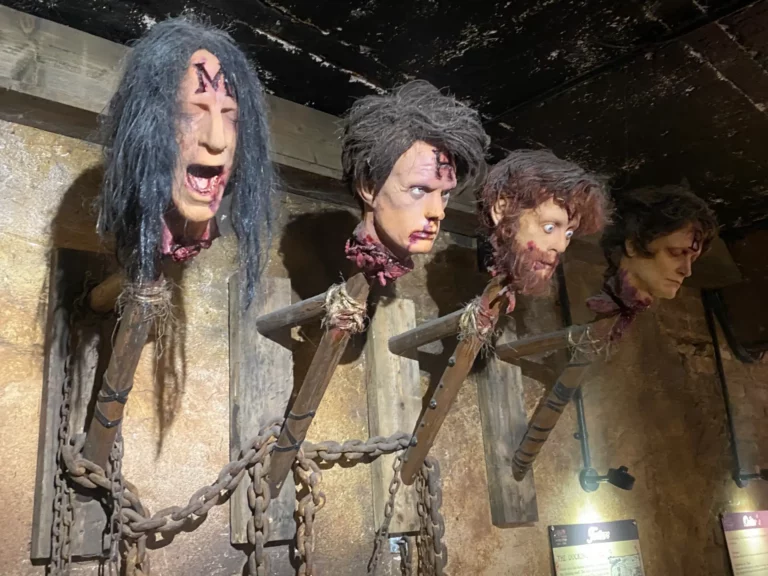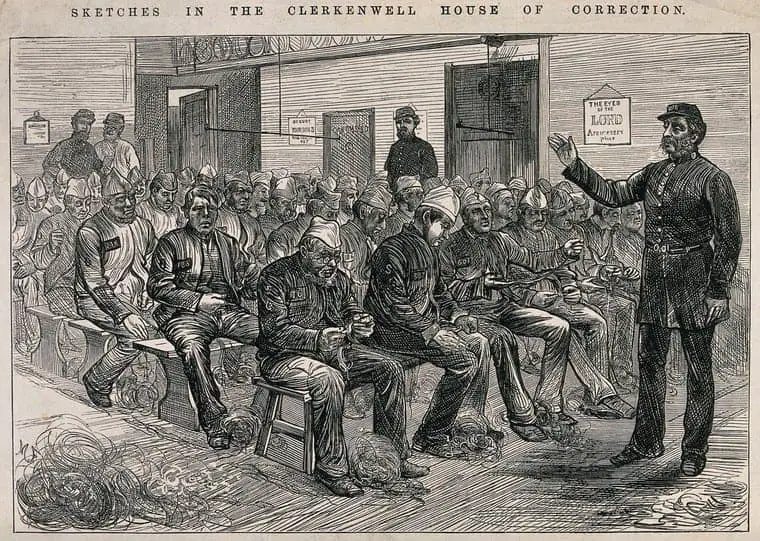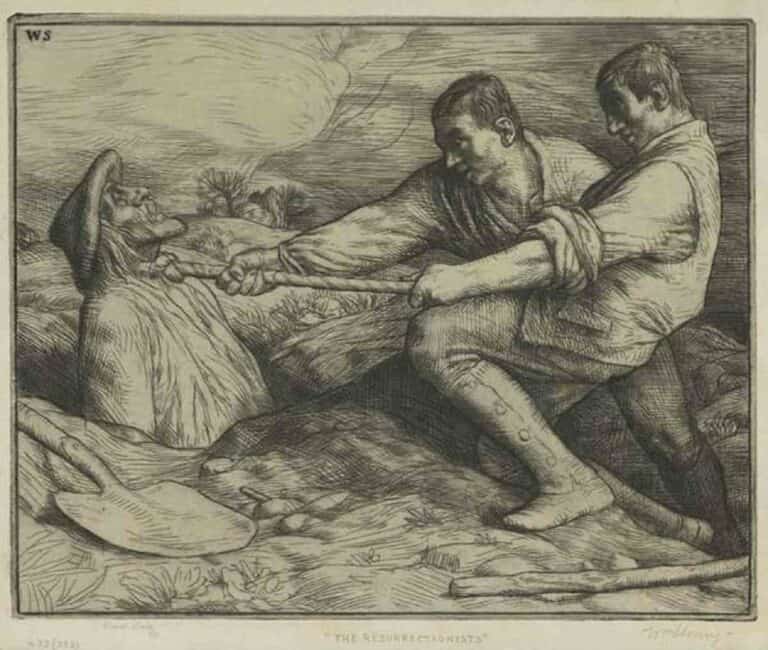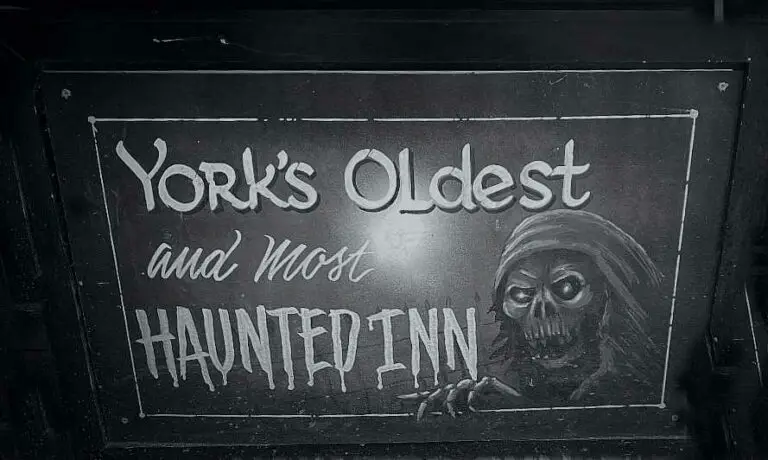New Orleans Graveyard Bucket List: 4 Cemeteries I Actually Want to Visit
This site uses affiliate links to sites, including Amazon. If you decide to make a purchase through any links, I’ll earn a small commission from the sale at no extra cost to you. Please read my Disclosure Policy for further information.
This is my personal bucket list for New Orleans graveyards— a list of the city’s most historic, unusual, or maybe even slightly overhyped burial grounds.
I’ve combed through the guidebooks, blog posts, and ghost tours to figure out which ones are actually worth seeing (or at least looking in to), and added them to my bucket list – I hope you find some inspiration from it.
Here you’ll find the four cemeteries that come up the most often in guidebooks, ghost tours, and local recommendations: St. Louis Cemetery No. 1, Lafayette Cemetery No. 1, Metairie Cemetery and Greenwood Cemetery.
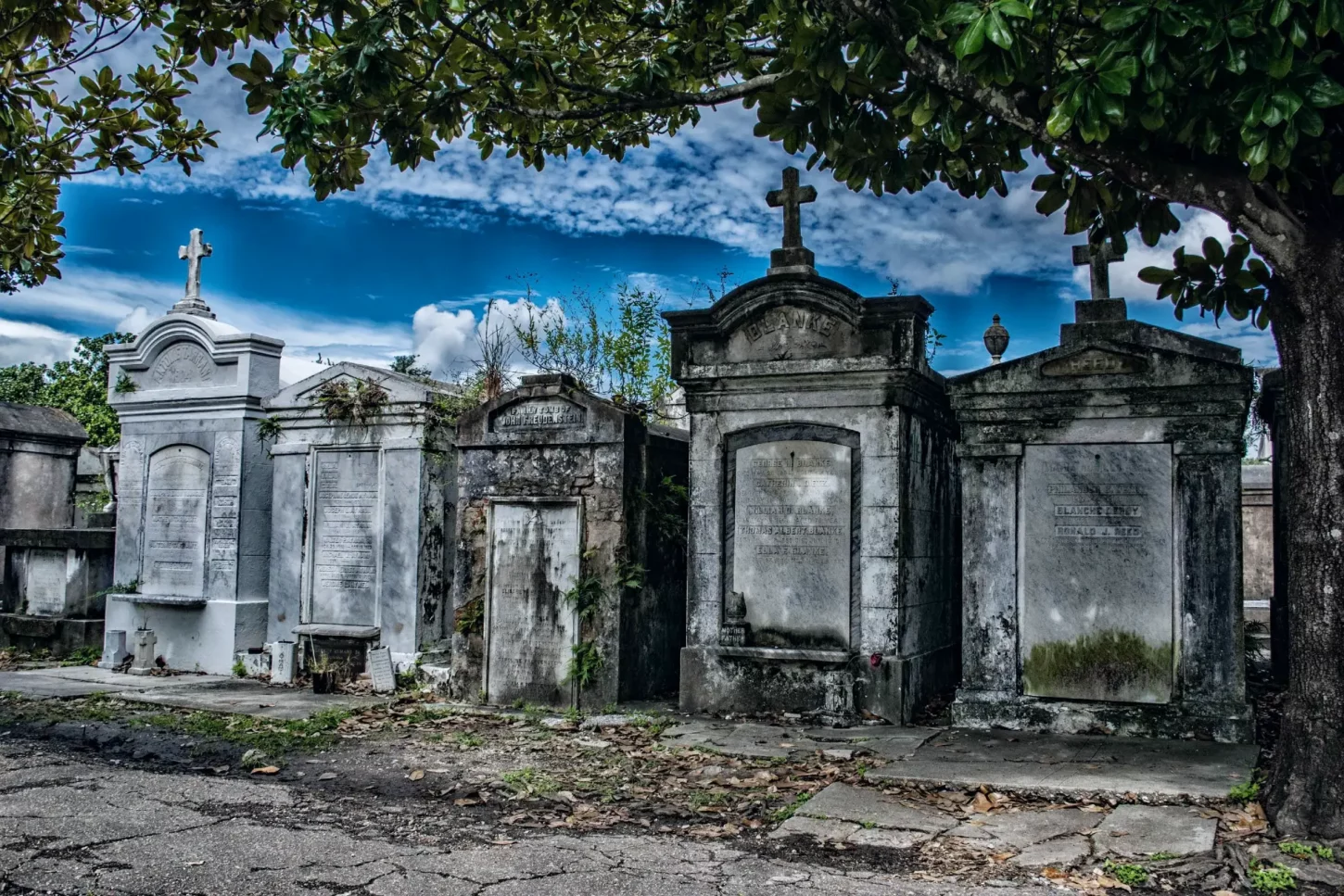
I’ll be visiting them one by one and updating this list as I go — that’s my plan anyway. Slowly but surely, from across the Atlantic.
If you’re planning your own cemetery trip, hopefully this will help you decide what’s worth your time — or at the very least, give you a few new names to scribble down for your own bucket list.
Table of Contents
St. Louis Cemetery No. 1
This is the cemetery everyone mentions first — the one that appears in every guidebook, ghost tour script, and Instagram reel.
But strip away the tourism packaging, and you’re left with something worth looking at properly: the oldest surviving cemetery in New Orleans, established in 1789 after the original St. Peter Street burial ground was closed for being too disease-ridden to continue.
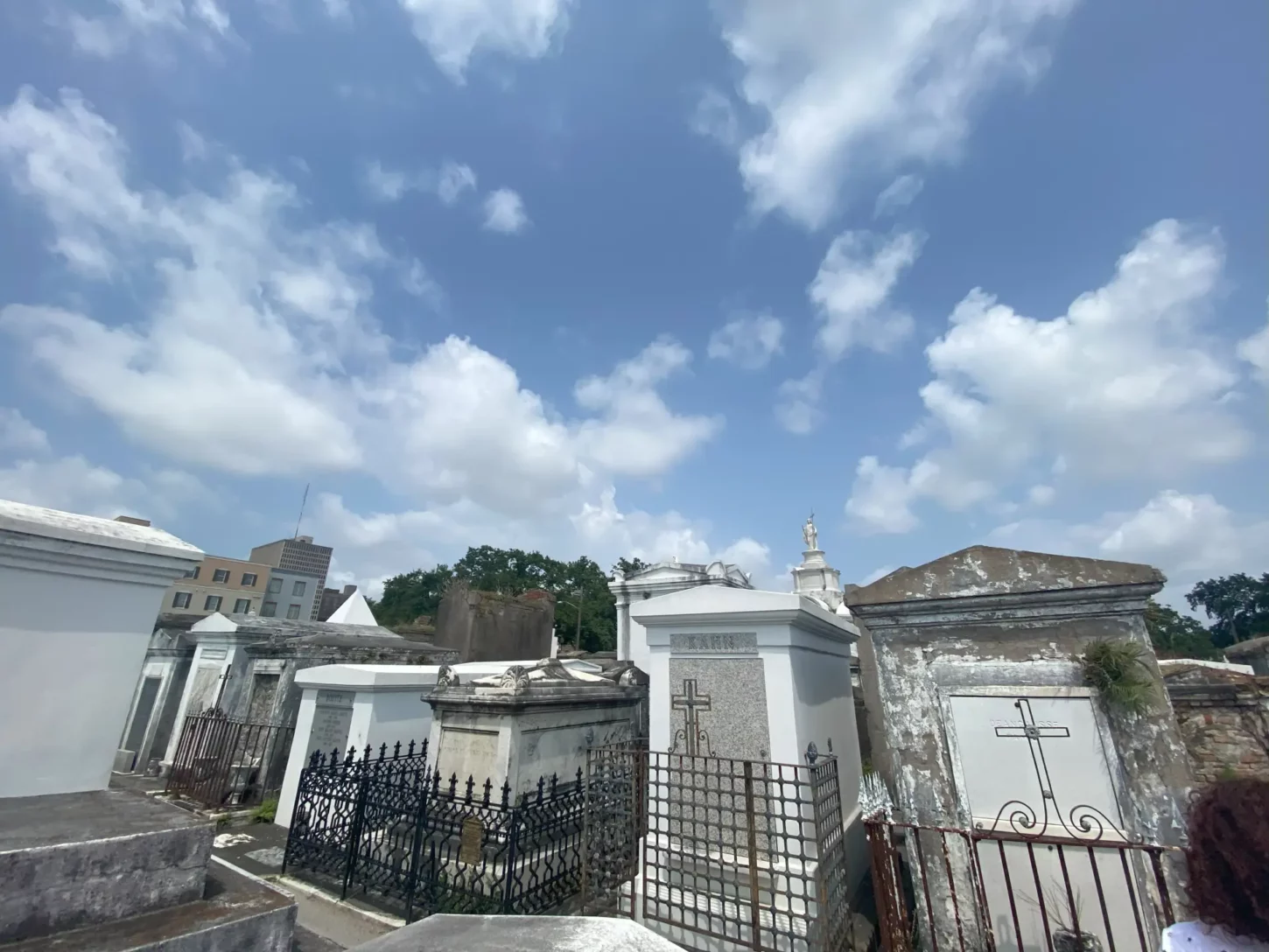
Why It’s on My Bucket List
What makes it essential (rather than just ‘famous’) is that it seems to set the standard as far as New Orleans graveyards go.
The above-ground tombs, the compact Catholic layout, the overlapping generations in vaults — it all starts here.
The city needed a way to bury its dead that wouldn’t float back up during the next flood, and this cemetery became the working solution.
It’s also crammed with names you’ll recognise if you’ve only read even a bit of New Orleans history: Bernard de Marigny, Étienne de Boré, Homer Plessy, and of course, the legendary Voodoo Queen herself, Marie Laveau.
People buried here shaped the city’s politics, sugar economy, legal system, and racial history.
And then there’s the pyramid. Of course there’s a pyramid.
(This isn’t me in the picture btw, this is my tour guide, but more on that later).
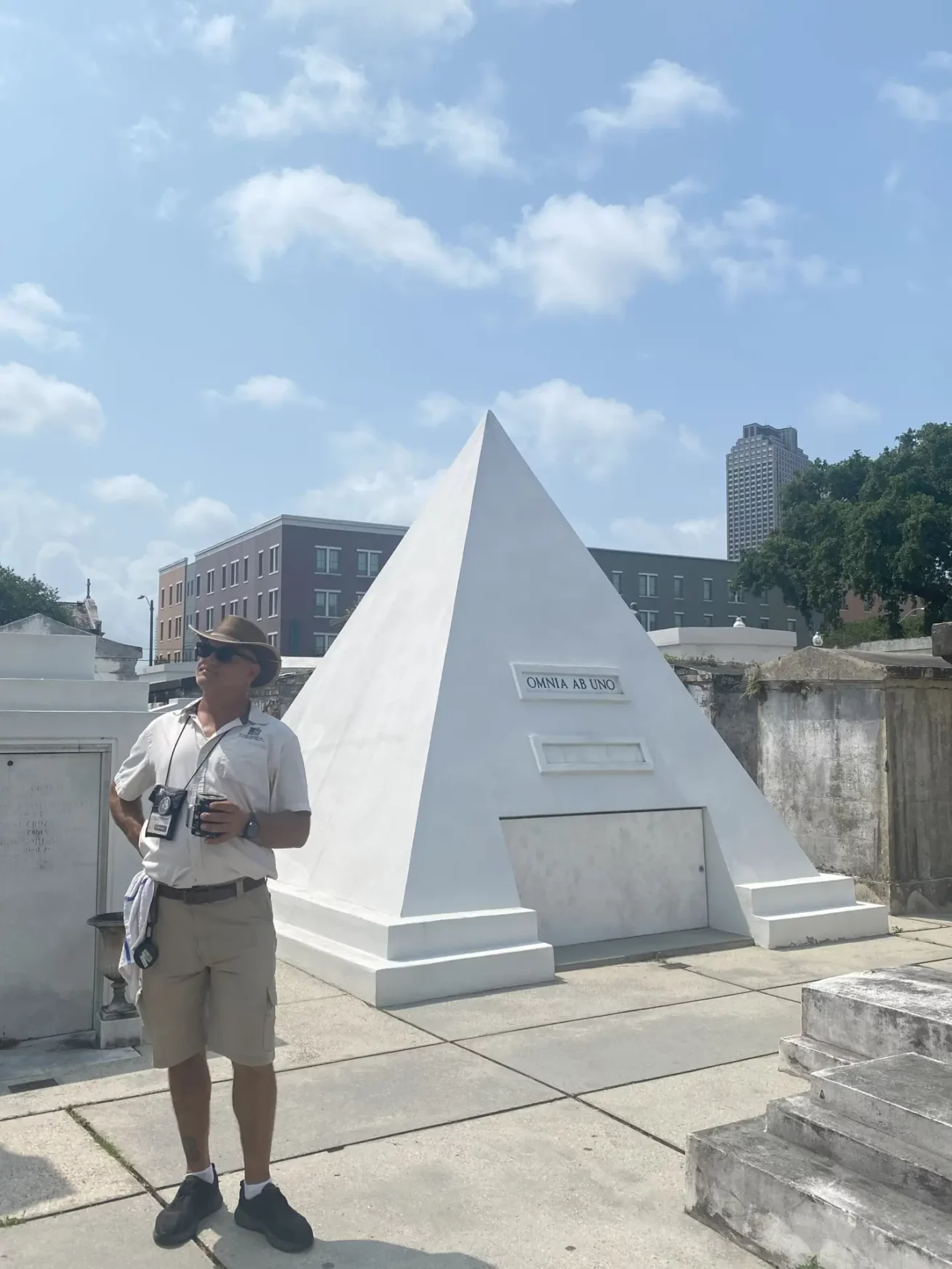
What People Say You Shouldn’t Miss
- Marie Laveau’s tomb – seems to be the highlight tomb here, or at least the tomb widely believed to be hers. She may be there. She may not. It doesn’t seem to matter.
- Nicolas Cage’s pyramid – built in 2010, and already more photographed than most of the 18th-century tombs around it. I can never wrap my head around pyramid tombs so the verdict is out with this one.
- Wall vaults – built for efficiency, not sentiment. There just seems so many that I need to see these for myself.
- Creole family tombs – built for reuse across generations, and shaped by the city’s flooding problem more than anything else.
Why I’m Still Curious Enough to Go
Despite the crowds and overexposure, it’s foundational to the burial culture in New Orleans. It’s here for a reason.
I’m fairly intrigued not only to see Cage’s pyramid tomb and Marie Laveau’s final resting spot, but I also want to feast my eyes on the tomb installed by the Italian Benevolent Society – the one that cause such an outrage after Peter Fonda climbed up it in the 1969 film Easy Rider.

It was because of this open violation, as well as Laveau’s tomb being repeatidly vandalised that St. Louis cemetery closed its doors and made access to the site via official tour only.
Update: Just Ticked This One Off My Bucket List
Future Suzie here with a quick update. Like you, I’m working through my list in between the day job — and I’m pleased to say St. Louis Cemetery No. 1 has now officially been visited and crossed off my bucket list!
You can read my full thoughts, takeaways, and everything in between over on my post: St. Louis Cemetery No. 1 | The Famous New Orleans Graveyard . Spolier alert – I absolutely loved it!
I hope it helps if you’re planning your own visit.
Lafayette Cemetery No. 1
Lafayette Cemetery No. 1 doesn’t get quite as much attention as St. Louis No. 1, but it turns up in most guidebooks, film lists, and anything involving Anne Rice.
It’s in the Garden District — which used to be the city of Lafayette before it was absorbed into New Orleans — and was the first cemetery in the area that was actually planned, rather than built in response to overcrowding or epidemic.
It’s also the most filmed cemetery in New Orleans.
Scenes from The Originals were shot entirely on location here, and during Double Jeopardy (1999), the crew even altered the cemetery gate to read “No. 3” instead of “No. 1.”

It’s the oldest of seven municipal, city-operated cemeteries in New Orleans, and the first to accept people of all faiths and backgrounds, with no religious segregation.
Most of those buried here were Irish and German immigrants who arrived after the Louisiana Purchase and settled in what was then a working-class neighbourhood upriver from the French Quarter.
The layout is more orderly than the older cemeteries in the city. The site is divided into four quadrants, with two main aisles intersecting in a cross. The tombs are arranged in symmetrical rows with trees lining the paths, giving the whole place a grid-like appearance.
It’s often described as calm — possibly why it’s been used in so many films. The cemetery opened in 1833 and still accepts burials.

Why It’s on My Bucket List
Lafayette was added to the National Register of Historic Places in 1972 and has appeared on several preservation watch lists, especially after Hurricane Katrina. It’s currently closed for repairs and rennovation work (2025), but once it reopens, I’d be curious to see what’s been restored — and what hasn’t.
I’ve added Lafayette No. 1 for a few reasons.
First, the Anne Rice connection. It’s where she staged her own jazz funeral to promote Memnoch the Devil — although I’ll admit I’m not really a vampire fan. This one’s more curiosity than genuine interest.
Still, the Karstendiek tomb — cast-iron, angular, and the only one of it’s kind in Lafayette — is often said to have inspired Lestat’s tomb in Interview with the Vampire.
The New Orleans graveyard has also turned up in just about every vampire or supernatural film shot in the city.
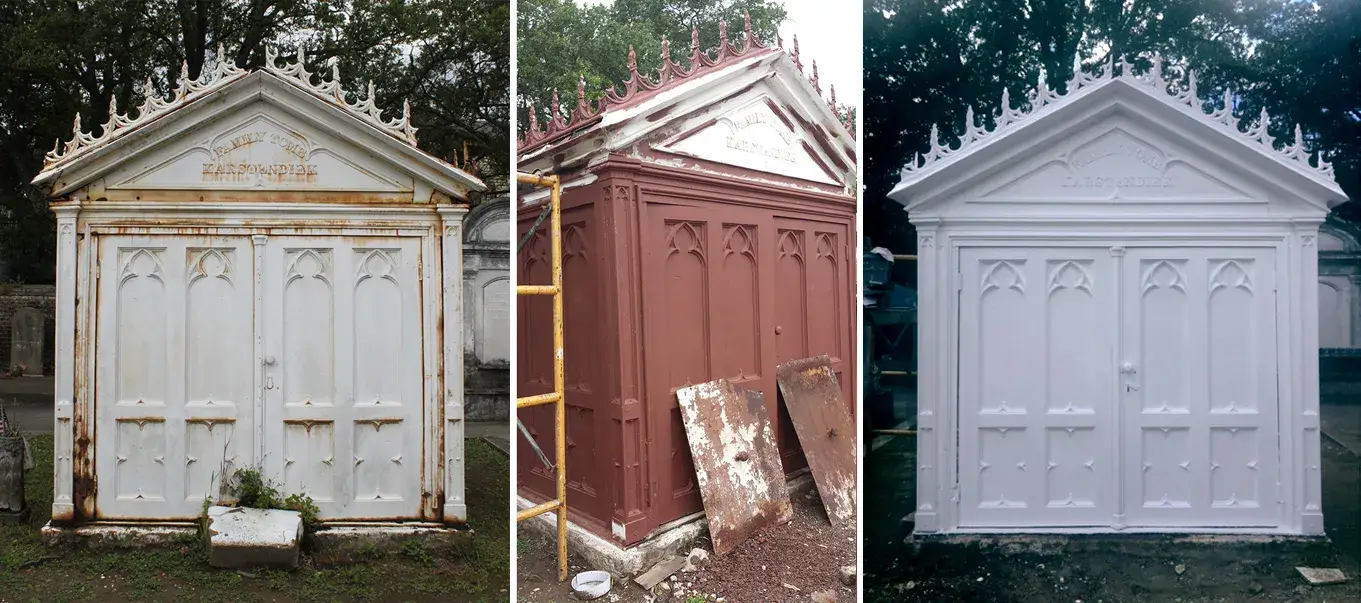
Second, I’m curious about the society tombs.
There are vaults here for the Independent Order of Odd Fellows, the New Orleans Home for the Incurables, and the Society for the Relief of Destitute Orphan Boys.
People still leave trinkets at the orphan tomb — these are collected by the Waldo Burton Memorial Home and passed on to boys in its care.
There are also fire company tombs, including the Jefferson Fire Company’s – Tomb No. 22, one of the largest in the cemetery – with a carved fire engine on its pediment.
Lastly, I’d like to see the wall vaults along Washington Avenue — around 500 in number I believe, and also the many closure tablets throughout the site. Closure tablets are the marble or granite slabs that seal the front of a tomb, usually inscribed with names.
In some cases, when a tomb was resold, older tablets were removed from the front and placed on the walls at the back of the tomb — still visible, just less prominent.
The Smith–Dumestre tomb has 37 names on it, the most in the cemetery, and that alone makes it worth a look.
I’ve never seen these before and really curious to see all the names.
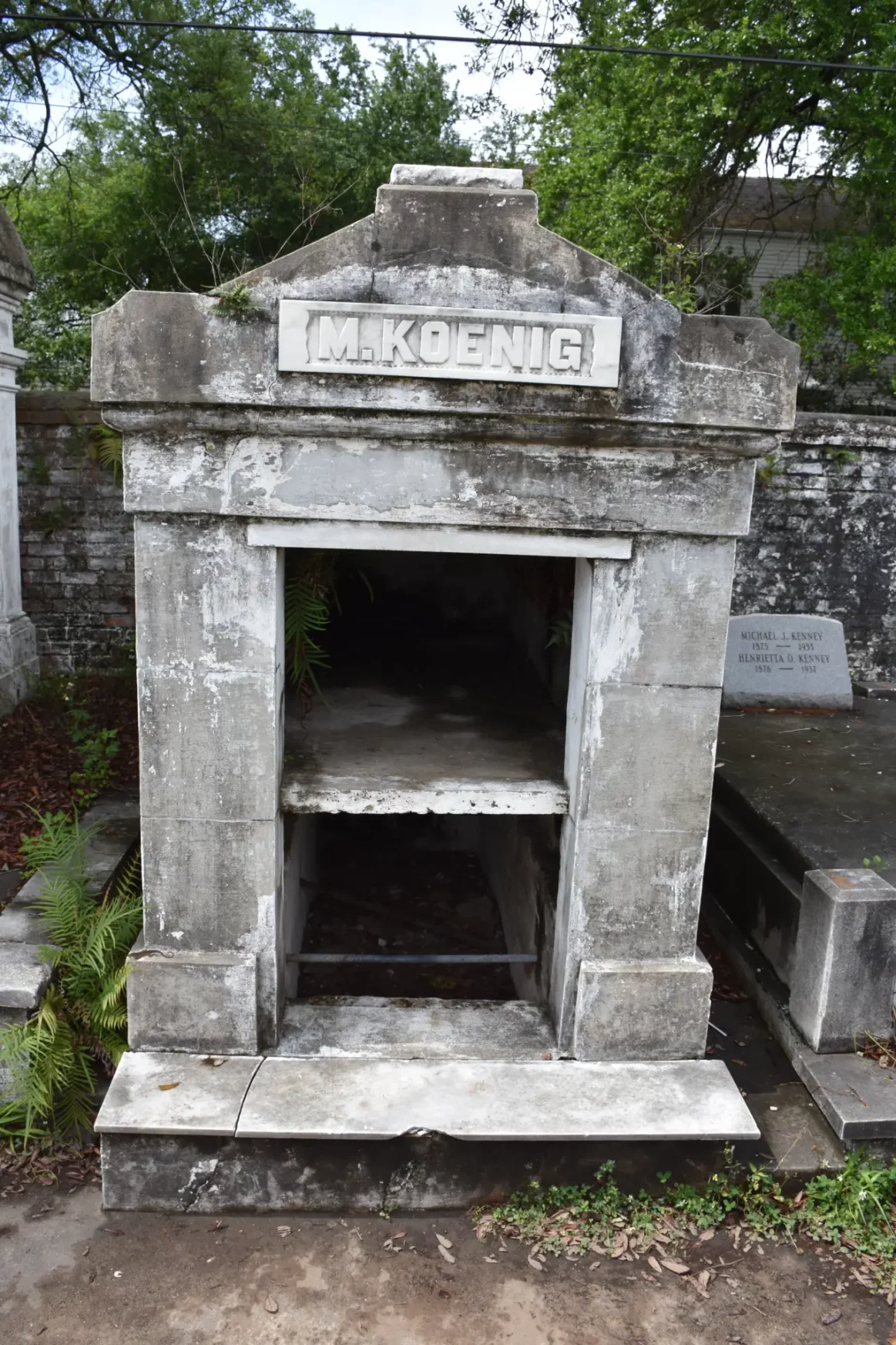
What People Say You Shouldn’t Miss
- The Karstendiek tomb – cast-iron and unmistakable, said to be the inspiration for Lestat’s in Interview with the Vampire
- The Orphan Boys tomb – where visitors still leave toys and trinkets, later passed on to children in care
- The Jefferson Fire Company tomb (No. 22) — one of the largest in the cemetery, complete with a carved fire engine on the pediment
- The Smith–Dumestre tomb — 37 names on a single structure, the most in Lafayette
- The Koenig tomb — unused and unsealed, offering a rare glimpse into the interior of a New Orleans family tomb
- The Moses–Payne tomb — features an hourglass with wings, a funerary symbol more commonly seen in the UK than in American cemeteries
Why I’m Still Curious Enough to Go
I’ve not been yet, but I want to. It’s the cemetery that gets mentioned nearly as much as St. Louis No. 1 – just for entirely different reasons. No voodoo queens or tour gates. Just a lot of bits and pieces I want to check out in person.
Plus I’m intrigued about the Anne Rice connection – should I start reading vampire novels at 50? Perhaps.
There’s also the cast-iron tomb ordered from a catalogue, the fire company vault with an engine carved into the front. The orphan boys’ society tomb where people still leave toys, and the unsealed Koenig tomb you can still see inside.
And lets not forget those closure tablets — sometimes removed and shuffled to the back of a tomb when the plot changed hands.
Things you don’t really get to see in the UK graveyards.
None of these would be enough on their own, but together they’ve put Lafayette Cemetery No.1 on my bucket list.
I just want to visit and see whether it holds up to the image I’ve built in my head – or whether it’s just a cemetery with good PR and the odd influencer or two behind it.
Metairie Cemetery
Metairie Cemetery isn’t actually in Metairie — it’s on Metairie Road. That seems to be a common point of confusion, so let’s get that out of the way first.
This is the largest cemetery in the city — over 9,000 graves and a layout that still follows the old horse racing oval it was built on. Before the Civil War, this was the Metairie Race Track, which went bankrupt shortly after the war ended.

Its journey into becoming a cemetery could stem from a potential curse — I may be wildly off point there — but when local lottery magnate Charles T. Howard was famously snubbed by the Metairie Jockey Club and denied membership, he vowed the site would one day be turned into a cemetery.
He himself is now buried here, strangely enough after falling from his newly purchased horse in 1885.
Why It’s on My Bucket List
It’s the sheer range of tombs and names that makes this one worth a visit.
There’s the Moriarty tomb, a 60-foot marble structure so large they had to build a temporary rail spur just to deliver the materials. That hadn’t occurred to me before — but of course these things were assembled on site.
How else would you haul a marble tower into a cemetery?
The Army of Tennessee monument which includes a statue of General Albert Sidney Johnston on his horse, ‘Fire Eater’, as well an ‘1885 life-size statue’ – not sure why we need the year here but I may be missing something – of a Confederate officer reading the roll of the dead at its enterance.
The Laure Beauregard Laredon tomb is one of a kind — built in 1885 from dark Belgian limestone in a Moorish style, with a stained glass window set into one of the arches.
Laure was the daughter of General Pierre Gustave Toutant Beauregard — the Confederate general who ordered the first shots at Fort Sumter that started the Civil War. She’s buried here with her husband and two children.
Then there’s the Josie Arlington tomb. She started out supporting her family through sex work and later opened her own brothel in 1890 — Château Lobrano d’Arlington.
When Storyville was set up as the city’s official red-light district (named after the alderman Sidney Story, who probably didn’t intend for that kind of legacy), she moved her business there too. The brothel burned down in 1905, and she later ran a saloon called The Arlington Annex before retiring in 1909. She died in 1913.
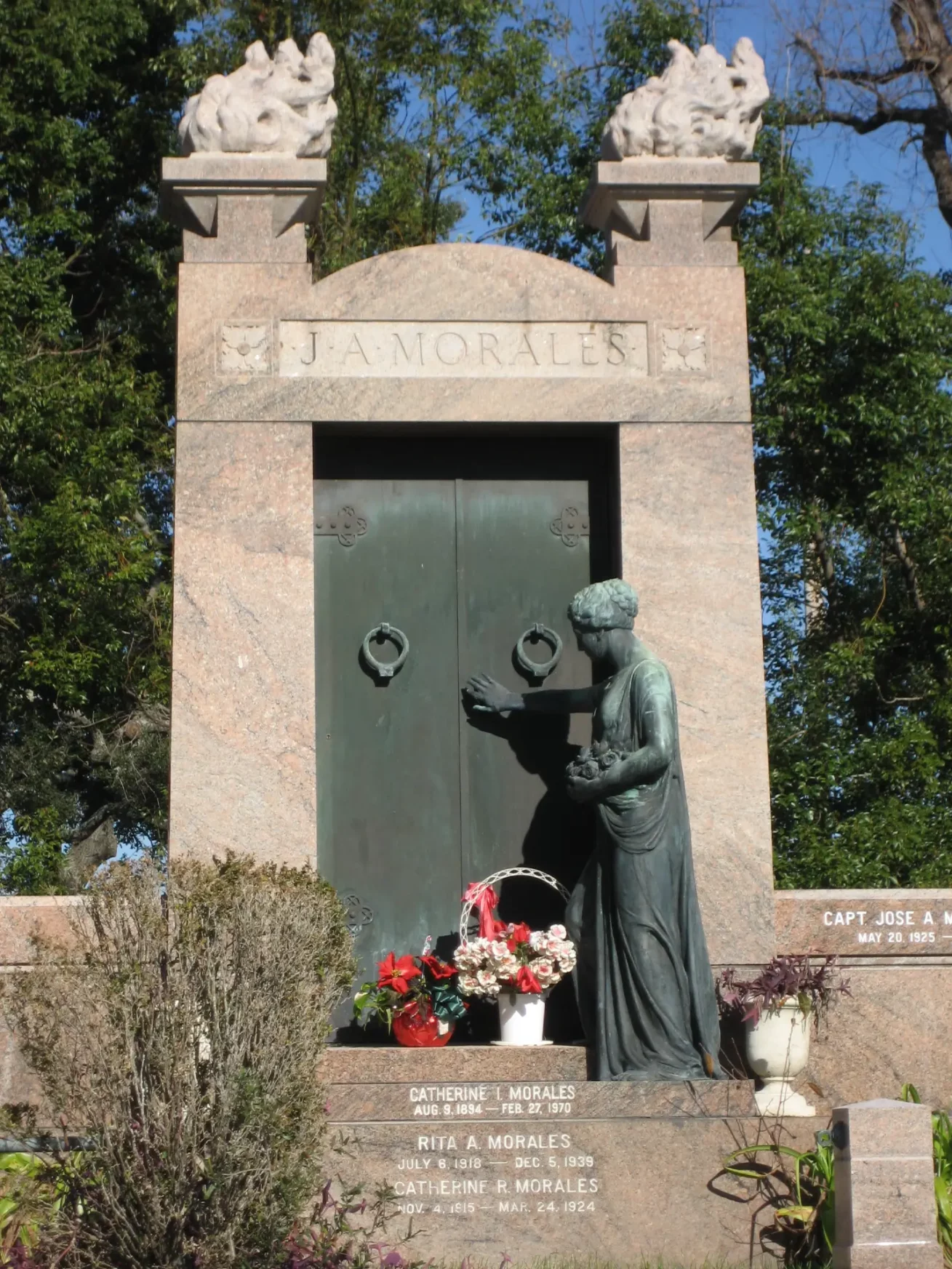
And of course, let’s not forget the tomb of Silvestro “Silver Dollar Sam” Carollo — Italian-American mob boss, Black Hand Gang member, and head of the New Orleans Crime family from the 1920s to the 1940s.
He was arrested multiple times, deported more than once, and still ended up here in Metairie Cemetery.
Not something you’ll find on most graveyard tours, I expect.
What People Say You Shouldn’t Miss
- The oval layout — Central Avenue still follows the old racetrack, most cemeteries and graveyards have straight paths, I think it’ll be kinda cool to see something a bit different
- The tomb of ‘Silver Dollar Sam’ – also known as Silvestro Carollo this mob boss had dealings with Capone himself and no historical true crime fan should miss an opportunity to see something directly linked to the criminals.
- The Josie Arlington tomb — former Storyville madam whose red granite grave drew so much attention her remains were quietly moved. The tomb was sold to the Morales family, and her new resting place, still within Metairie Cemetery, remains a mystery.
- The monuments and mausoleums — Metairie’s known for its over-the-top architecture: pyramids, angels, pavilions, obelisks. I have to see them purely for the fact that they all seem so grand and it’ll be nice to contrast them against the wall monuments in UK graveyards.
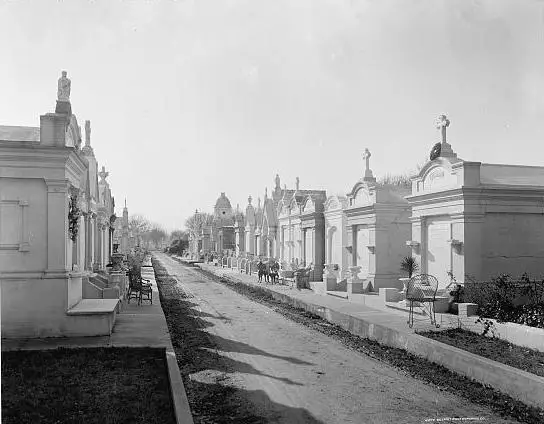
Why I’m Still Curious Enough to Go
It’s a cemetery that gets mentioned for its scale more than its atmosphere — oversized tombs, marble everywhere, and a racetrack layout left over from when the site was run by the Metairie Jockey Club.
I want to see if it’s as over-the-top as it sounds.
There’s the 60-foot Moriarty tomb, the one that needed a railway line to bring in the marble, and the Laredon tomb — I think the stained glass alone will be worth seeing, not to mention the Moorish influence on the structure itself.
It feels like the kind of place where the more you look, the more you find. Reading about it online isn’t quite the same as standing in front of it in person. This cemetery seems like it’s trying to show off — and fair enough, really.
And I want to compare it to what I know — especially the wall monuments you see in places like Greyfriars Kirkyard or Old Calton in Edinburgh. The difference in scale alone sounds intriguing.
Greenwood Cemetery
Greenwood Cemetery isn’t usually top of the tourist list, but it’s one of the largest cemeteries in New Orleans — and one of the most overlooked.
It was opened in 1852 by the Firemen’s Charitable & Benevolent Association and quickly became a burial ground for epidemics, firemen, and fraternal societies.
It’s less compact than the older graveyards in the city, with broader avenues and grander monuments. You won’t find voodoo queens or vampire lore here — just scale, symbolism, and a few surprises tucked between the tombs.
Why It’s on My Bucket List
Opened in 1852 by the Firemen’s Charitable & Benevolent Association, Greenwood Cemetery was established to help relieve overcrowding at Cypress Grove following a yellow fever epidemic that killed over 8,000 people in New Orleans.
It covers around 150 acres and holds nearly 20,000 grave lots — making it one of the largest cemeteries in the city.
It was also the first above-ground cemetery in New Orleans built without perimeter walls. The layout is more open than other historic graveyards here, with wide avenues, rows of tombs, and a slightly more structured, park-like feel.
It’s not as well known to visitors, but it has some of the most distinctive monuments in the city — which is exactly why it’s on my list.
What People Say You Shouldn’t Miss
- The Firemen’s Monument — built in 1877 to mark the 50th anniversary of the Firemen’s Association, the statue shows a volunteer fireman under a set of Gothic arches. It’s thought the design was inspired by the Walter Scott Monument in Edinburgh (you can certainly see the resemlence) and the base honours 23 volunteer fire companies.
- The Confederate Monument — dedicated in 1874, this was the first Civil War monument erected in New Orleans. It marks a mass grave where the remains of 600 Confederate soldiers were reinterred by the Ladies Benevolent Association of Louisiana.
- The Isaac Newton Marks tomb — a cast iron tomb behind a Gothic-style fence. Marks was a businessman and volunteer firefighter in the 1840s and served as president of the Firemen’s Association.
- Lodge No. 30 — built in 1912 and topped with a bronze elk statue the Elks Lodge looks simply majestic. Inside the mound are 18 burial vaults, and the clock above the chamber is permanently set to the 11th hour — a found toast to absent members.
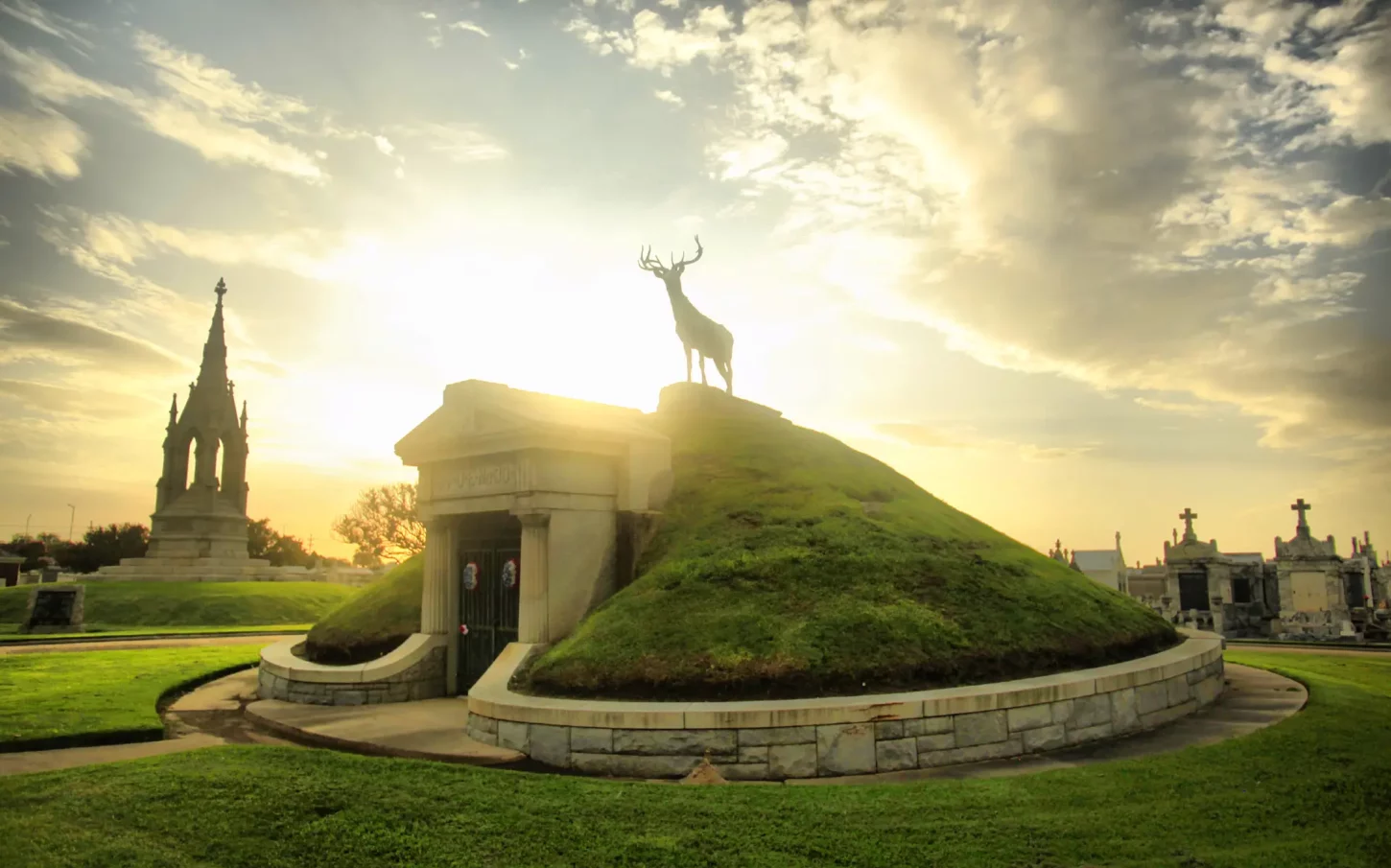
Why I’m Still Curious Enough to Go
I want to go because it sounds less cluttered and more serene than other New Orleans graveyards — a contrast to the inner-city cemeteries most tourists flock to.
The layout looks more open, the paths are wider, and I get the impression it’ll feel calmer than the others.
It’s also the only one that offers a downloadable planning guide, which I still find oddly satisfying. I’m curious to see what that looks like in person – you’re promted to signup for a copy when you go onto Greenwood Cemetery‘s website
And boy, do I want to get a proper close-up of that elk.
It looks magnificent. I’d also like to compare the Firemen’s Monument with the Walter Scott Monument on Princes Street in Edinburgh — they look incredibly alike, and the only way to find out is to visit in person.
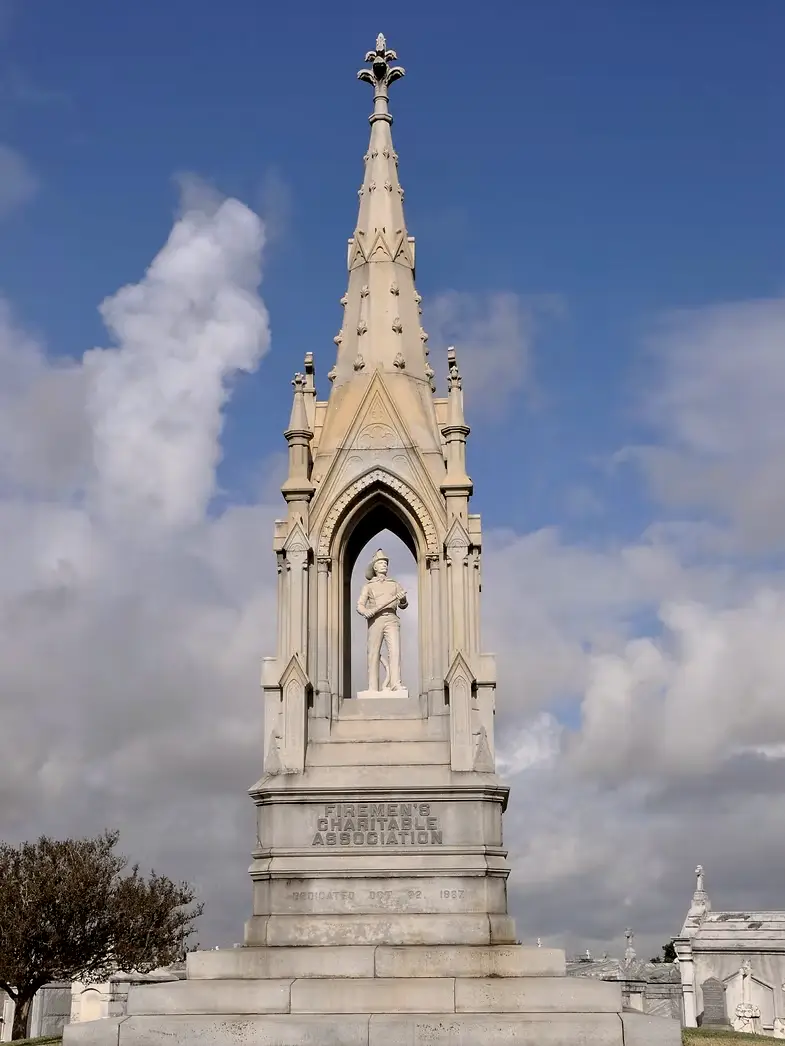
Famous Ghost Stories from New Orleans Graveyards
New Orleans cemeteries have their share of ghost stories – some more theatrical than others. A few have made it into this list (Metairie’s “flaming tomb” springs to mind), while I’ve glanced over the others.
Here’s a quick rundown of the ones that caught my eye in the cemeteries above.
St Louis Cemetery No. 1
Marie Laveau is the headline ghost here, often said to appear walking the rows. People claim they’ve been scratched, shoved, or even knocked over near her tomb.
Other spirits said to wander include a sailor named Henry Vignes, buried in an unmarked grave, and a man known as Alphonse, who picks flowers from other tombs to decorate his own or asks visitors to take him home.
And is it true that chess legend Paul Morphy has been spotted playing a phantom game on more than one occasion?
I’m not ruling it out.
Lafayette Cemetery No. 1
This one doesn’t get as much ghost attention as St. Louis or Metairie, but there are a few stories floating around.
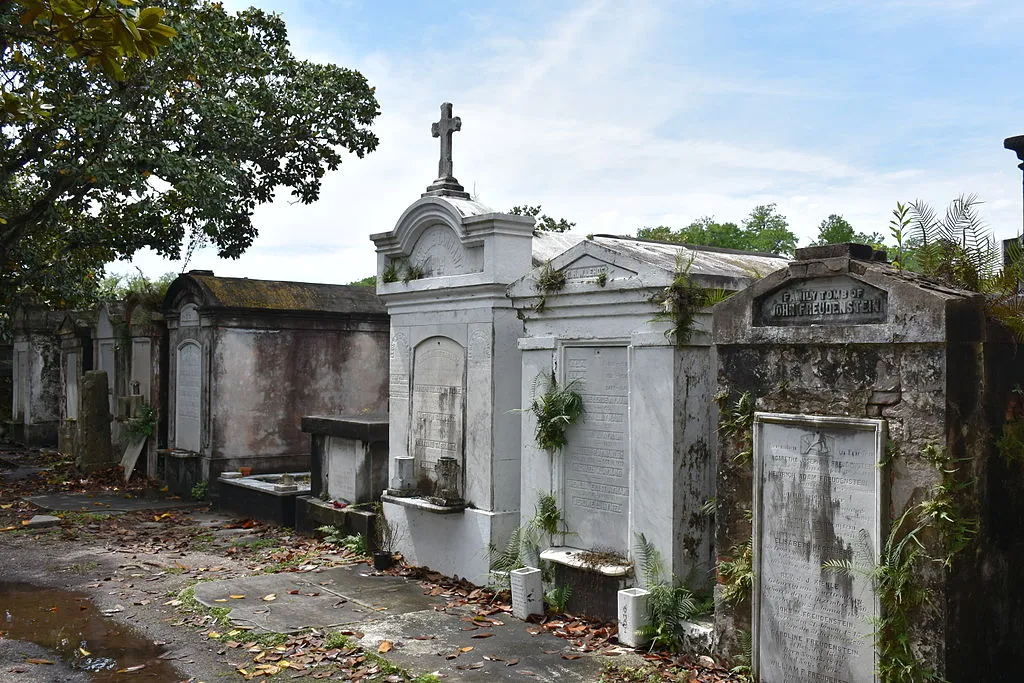
Some say the souls of yellow fever victims still roam the grounds, with sounds of crying heard near certain tombs.
One account mentions a figure appearing at the gates to pick flowers from nearby graves — but the details are vague, and most sources repeat the same filler.
Metairie Cemetery
The main ghost story here centres on Josie Arlington’s tomb — a polished red granite monument with a reputation for glowing at night.
It earned the nickname “the flaming tomb” after reports that the stone briefly caught fire when a few late-night visitors stopped by. Others claimed the statue on the steps moved – including, apparently, two cemetery workers who swore they’d seen it.
The glow was later blamed on a nearby streetlight, but the stories stuck, and people still leave coins at the gate – just in case or so people say…
Greenwood Cemetery
There aren’t many ghost stories tied to Greenwood, and it’s not a regular feature on ghost tours — but a few reports do crop up.
Most of them centre around the Confederate section, where some visitors have said they’ve heard footsteps or voices when no one else was nearby. Others mention shadowy figures near the memorial, but there’s no recurring story or named ghost attached to it.
That’s about as far as the folklore goes. Compared to St. Louis or Metairie, Greenwood has a quieter reputation — in more ways than one.
Getting The Most Out of Visiting New Orleans Graveyards
If I could resist buying books, everything would be fine. But I can’t — especially not a crisp, tightly bound paperback just waiting to be lifted off the shelf and opened by some overenthusiastic history nerd (or whatever category I fall into at the time).
Here are a few of the many titles that caught my eye while I was putting this New Orleans graveyard bucket list together. Some I’m tempted to dive into — Interview with the Vampire, I’m looking at you.
Others I’ll probably revisit closer to the time, if I’m lucky enough to actually plan a trip to the States.
I’ve also started to really appreciate a good cemetery tour. I’ve done a few before — mostly at Greyfriars in Edinburgh — and the difference it makes to your visit can be huge. So I’ve included a handful of tours that seem to be hitting the mark with other graveyard fans.
Hopefully they’re not all hype and no substance, because I’d be seriously considering the ones below if I were heading to New Orleans anytime soon.
If you’re booking onto a tour for Lafayette Cemetery No. 1, just remember the closures due to repair and renovation as of 2025.
For Anyone Who Needs a Bit More Than Just a Map
- Cemeteries of New Orleans: A Journey Through the Cities of the Dead by Jan Arrigo — An older one, but still gets mentioned. Some of the Amazon reviews were odd enough to catch my interest, so it’s gone on the wishlist — whether I actually read/buy it is another matter.
- Fear Dat New Orleans by Michael Murphy (foreword by Anne Rice) — A slim book that sounds more my speed: part compendium, part wry scepticism. It’s got a few typos by the sound of it, but I’ll probably let those slide if it helps scratch the graveyard itch.
- New Orleans Vampires: History and Legend by Marita Woywod Crandle — Written by the owner of the New Orleans Boutique du Vampyre, which already gives it some local clout. The Casket Girls story caught my attention — never heard of them before. Might end up getting bumped to the top of the TBR pile.
- Voodoo Queen: The Spirited Lives of Marie Laveau by Martha Ward — This one gets mixed reviews, and I’ll admit the cover puts me off. But if I were swept up in the moment (or standing too close to the boutique till), I could probably justify a copy.
- The Magic of Marie Laveau by Denise Alvarado — I haven’t read it, but it gets mentioned a lot (and reviewed fairly well). It leans more into Laveau’s spiritual legacy and includes a few rituals, if that’s your thing. (Plus, I’m absolutely loving the cover on this one.)
- Interview with the Vampire by Anne Rice — And of course, there’s this. After digging into Lafayette’s film credits and Anne Rice connections, it feels like required reading — even if I am a little late to it.
Tours That Might Actually Be Worth It
- St. Louis Cemetery No. 1 Walking Tour (Day Time) – The only way to get into St. Louis Cemetery No. 1 is via an official tour with NOLA and this is it! Genuinely excellent and it’s the tour I booked on myself. My guide was outstanding and has actually made me rethink how I feel about tours in general. If you’re hesitating, don’t. This one’s so worth it. Where to book: GetYourGuide | Viator
- St. Louis Cemetery No. 1 Walking Tour (Night Time) – NOLA also run a 45-minute night tour of the cemetery, and it looks like it wouldn’t disappoint either. Get it booked, I say — what are you waiting for? Where to book: Direct with NOLA | Viator
- Garden District and Lafayette Cemetery Guided Walking Tour – Scoured the listings for one that actually includes Lafayette Cemetery No. 1, and this looks like a bit of a nugget. No dawdling here — the guide sounds genuinely enthusiastic, which I love. Where to book: Viator
- Ghost, Crime, Voodoo, and Vampires Guided Tour – I’d give this a shot for sure. The reviews are decent, and apparently they update the tour regularly as new stories and research come to light — which, to me, shows a bit of passion. It’s over-18s only, so it’s got to be good. Right? Where to book: GetYourGuide | Viator
I found it quite difficult to track down tours for Greenwood or Metairie Cemetery that actually had a bit of substance — nothing that really jumped out.
But these next few, which cover a mix of New Orleans graveyards not mentioned above, kept popping up in searches and might be worth a closer look. They’re spread across Viator and GetYourGuide, depending on where I found them.
- New Orleans Historic Cemetery Tour: Explore Our Cemeteries – Visits three historic cemeteries outside the usual list, which could be a nice change of pace from the big four. Where to book: Viator
- New Orleans: Cemetery Tour – This one feels like a bit of a hidden gem. It’s been mentioned on both the Travel Channel and the History Channel, and while it’s easy to miss on GetYourGuide, it still made my list of possibles. Where to book: GetYourGuide
- New Orleans: City & Cemetery Tour by Air-Conditioned Minibus – This one made the cut because you’re picked up in an air-conditioned bus — a must-have accessory in New Orleans. There’s a cemetery stop included, though I couldn’t figure out which one. Still, it’s on my list as a possible. Where to book: GetYourGuide

